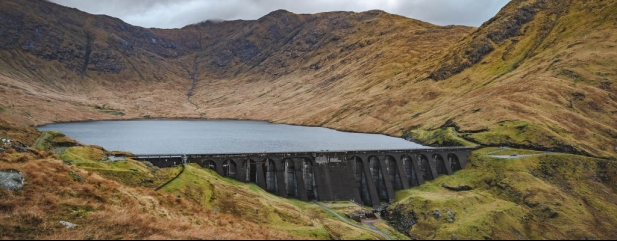Archived article
Please note that tax, investment, pension and ISA rules can change and the information and any views contained in this article may now be inaccurate.
Why Drax is great way to play the tight energy market

A tight UK energy market and higher prices are providing a tailwind for renewable energy generator Drax (DRX) which increased guidance following better than expected full year results (24 Feb).
Drax also benefits from intermittent wind and solar supply and earns ancillary revenue from effectively keeping the lights on and supporting the system.
At a capital markets day presentation (1 Dec) Drax announced £3 billion of investments from 2022 to 2030 to accelerate growth.
The investments are expected to deliver returns significantly above the company’s cost of capital, driving shareholder value.
Despite the growth outlook, the shares languish on 11 times 2022 expected earnings, falling to 7.8 times in 2023 according to Stockopedia data.
The rating looks too low compared with expected growth.
TIGHT ENERGY MARKET
The UK wholesale power market was tight even before the invasion of Ukraine with day ahead electricity prices surging 55% in 2021.
According to analyst Adam Forsyth at Longspur Research, lower average wind speeds in 2021 meant more expensive gas generation was needed to fill the gap.
Gas-fired power is used as back up because renewable sources like wind and power are less reliable and cannot provide energy on demand.
While there are concerns over unusual weather patterns becoming more permanent, accelerated by climate change, work conducted by Imperial College suggest the evidence is inconclusive.
Even assuming a normalisation of wind patterns, Forsyth expects higher carbon prices will keep electricity prices buoyant in the medium term.
DRAX IN A NUTSHELL
Over the last few years Drax has completed Europe’s largest transition from fossil fuels to sustainable biomass.
Drax is vertically integrated and sells over 90% of its own energy supply through two business-to-business suppliers, Haven and Opus.
The former targets large industrial and commercial clients while the later focuses on small and medium-sized businesses.
Most of the energy produced by Drax is from biomass burnt at its power station in Selby, Yorkshire near the Humber estuary. In addition, the company has hydro energy plants and a pumped-storage facility.
Drax also has overseas operations. It operates a waste wood and dust business based in Louisiana and owns Canadian wood pellet producer Pinnacle Renewable Energy.
The company is developing BECCS (bioenergy CO2 capture and storage) facilities with a long term target of becoming a negative emissions company.
EXCITING GROWTH PLANS
Drax is aiming to become the global leader in sustainable biomass and has targeted a doubling of production capacity for its own use to eight million tonnes a year by 2030.
It is also planning to increase wood pellet sales to third parties to four million tonnes a year from the current two million.
Japan is looking to double the use of biomass while Europe is expected to grow bioenergy use by 70% by 2050, providing long-term demand support from these regions.
As the business increases in scale, it drives down input costs resulting in a higher spread and margin.
For example, the company has reduced the cost per tonne of wood pellets from $166 in 2018 to $141 per tonne and targets $100 per tonne by 2027.
WORLD’S LARGEST CO2 CAPTURE AND STORAGE PROJECT
Drax plans to transform the Selby power station into the world’s largest BECCS (bioenergy carbon capture and storage) project aimed at capturing eight million tonnes of CO2 a year by 2030.
It is building transportation facilities to carry the gas into storage facilities under the North Sea, permanently removing it from the atmosphere.
An investment decision will be made in 2024 subject to a supportive regulatory regime with the first unit coming on stream in 2027 and a second in 2030.
In addition, the company is targeting four million tonnes of negative emissions from new build BECCS projects outside the UK.
A LEADER IN UK DISPATCHABLE RENEWABLE ENERGY
Longer term Drax believes 80% of the UK’s energy needs could be met by intermittent renewable and inflexible low-carbon energy sources, wind, solar and nuclear.
However, this means the remaining sources need to provide reliable dispatchable energy to maintain security of supply and keep costs low for the consumer.
Drax believes this is a big opportunity for its biomass capability and pumped storage and hydro power facilities.
It plans to build a second pumped storage facility at Cruachan in Scotland, providing 600MW (megawatts) of dispatchable long-duration storage to the power system.
Cruachan is effectively a giant battery produced by two reservoirs which sit between a hanging valley.
The main advantage of pumped storage is its fast response time, taking under 30 seconds to dispatch energy. Additionally, it can store energy for up to 16 hours.
Drax’s ambitious plans to become a negative emissions company is aligned with the Government’s net zero carbon goals and provides a positive backdrop for the shares.
Important information:
These articles are provided by Shares magazine which is published by AJ Bell Media, a part of AJ Bell. Shares is not written by AJ Bell.
Shares is provided for your general information and use and is not a personal recommendation to invest. It is not intended to be relied upon by you in making or not making any investment decisions. The investments referred to in these articles will not be suitable for all investors. If in doubt please seek appropriate independent financial advice.
Investors acting on the information in these articles do so at their own risk and AJ Bell Media and its staff do not accept liability for losses suffered by investors as a result of their investment decisions.

 magazine
magazine










